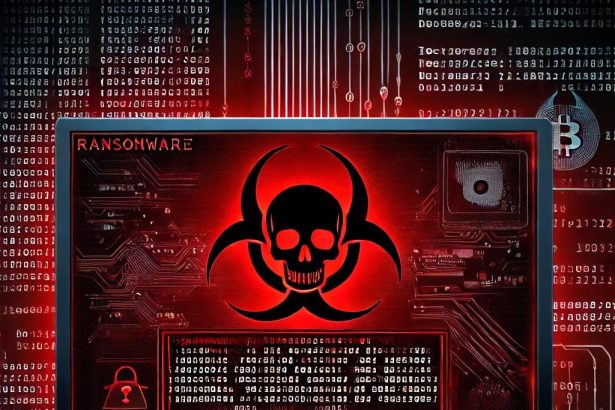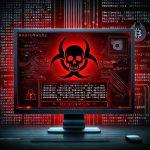The Optimus ransomware is a newly discovered file-encrypting malware strain based on the notorious Chaos ransomware framework. This crypto-virus was identified through samples uploaded to VirusTotal, where researchers observed its activity in encrypting files, appending random four-character extensions, modifying system wallpapers, and demanding a ransom via a detailed note titled “OPTIMUS_readme.txt.”
Once active, Optimus renders files inaccessible, replacing original names like 1.jpg or 2.png with 1.jpg.zm3i or 2.png.gexv, respectively. Victims are warned that tampering with the malware or shutting down the PC will lead to irreversible file deletion. Although the ransom demand is relatively low—$50 in Bitcoin—there are no contact details provided, making it likely the ransomware is either still in development or incomplete.
Threat Summary
| Attribute | Details |
|---|---|
| Threat Name | Optimus virus |
| Threat Type | Ransomware, Crypto Virus, File Locker |
| Encrypted File Extension | Random four characters (e.g., .zm3i, .gexv) |
| Ransom Note Filename | OPTIMUS_readme.txt |
| Contact Details | None provided |
| Ransom Amount | $50 in Bitcoin |
| Bitcoin Wallet | 17CqMQFeuB3NTzJ2X28tfRmWaPyPQgvoHV |
| Detection Names | Avast (Win32:RansomX-gen), ESET (MSIL/Filecoder.Chaos.A), Microsoft (Ransom:MSIL/FileCoder.AD!MTB), Kaspersky (HEUR:Trojan-Ransom.MSIL.Agent.gen), Combo Cleaner (Generic.Ransom.Hiddentear.A.47C48AE5) |
| Symptoms of Infection | Files renamed with random extensions, ransom note displayed, new wallpaper |
| Damage | File encryption, potential data loss, system manipulation |
| Distribution Methods | Infected email attachments (macros), torrent websites, malicious ads |
| Danger Level | High |
Ransom Note: OPTIMUS_readme.txt
YOU HAVE BEEN SELECTED
YOU HAVE BEEN SELECTED
YOU HAVE BEEN SELECTED
TIMER WILL START SOON
This is not a mistake. This is not random. You were chosen deliberately.
Your system is under our complete control. Every file, every memory, every trace of your digital life is encrypted with unbreakable methods. Shutting down your PC or attempting to bypass us will only result in one outcome: you will lose everything, forever.
THE RULES ARE SIMPLE
DO NOT CLOSE THE TIMER PROGRAM. It is monitoring your actions. If you try to interfere, your data will be destroyed immediately.
DO NOT TURN OFF YOUR PC. This will trigger irreversible deletion of all your files. You will never get them back.
You have exactly 24 hours to comply. When the timer hits zero, every file on your system will be permanently erased.
WHAT YOU MUST DO
To regain access to your files, you must:
Send $50 in Bitcoin to the following address:\n17CqMQFeuB3NTzJ2X28tfRmWaPyPQgvoHV
Include your unique identifier in the payment notes: -
Wait for confirmation. Once we verify your payment, the decryption will start
FAILURE HAS CONSEQUENCES
If you:
Close the timer program,
Turn off your PC,
Or fail to pay within the allocated time,
All your data will be lost forever. There will be no second chances, no exceptions, no recovery.
YOUR FUTURE IS IN YOUR HANDS
This is not a game. This is your only chance to reclaim what is yours. The clock is ticking, and every second brings you closer to losing everything.
Do as instructed. Do not test us. Your files depend on it.Desktop Wallpaper Message
WOOPS!
WE MAKE OUR OWN RULES
Exclode 01
all youre files been encrypted:(Manual Ransomware Removal Process
Important: Manual removal is recommended only for experienced users, as incorrect actions can lead to data loss or incomplete removal of the ransomware. If unsure, consider the SpyHunter Removal Method for a guided, automated solution.
Step 1: Disconnect from the Internet
- Immediately disable Wi-Fi or unplug the Ethernet cable to prevent the ransomware from communicating with remote servers.
- This can prevent additional encryption or further infections.
Step 2: Boot into Safe Mode
For Windows Users
- Windows 10/11:
- Press Windows + R, type
msconfig, and press Enter. - Under the Boot tab, select Safe boot and check Network.
- Click Apply, then OK, and restart your PC.
- Press Windows + R, type
- Windows 7/8:
- Restart your PC and press F8 repeatedly before Windows starts.
- Select Safe Mode with Networking and press Enter.
For Mac Users
- Restart your Mac and hold the Shift key immediately after the startup chime.
- Release the key when the Apple logo appears.
- Your Mac will boot in Safe Mode.
Step 3: Identify and Terminate Malicious Processes
Windows
- Open Task Manager by pressing Ctrl + Shift + Esc.
- Look for unusual processes consuming high CPU or memory.
- Right-click on the suspicious process and select End Task.
Mac
- Open Activity Monitor (Finder > Applications > Utilities > Activity Monitor).
- Look for unknown or high-resource-consuming processes.
- Select the suspicious process and click Force Quit.
Step 4: Delete Ransomware Files
Windows
- Open File Explorer and navigate to:
C:\Users\[Your Username]\AppData\LocalC:\Users\[Your Username]\AppData\RoamingC:\Windows\System32
- Identify and delete suspicious files (randomly named or recently modified items).
- Clear temporary files:
- Press Windows + R, type
%temp%, and hit Enter. - Delete all files in the Temp folder.
- Press Windows + R, type
Mac
- Open Finder and select Go > Go to Folder.
- Type
~/Library/Application Supportand check for unfamiliar files or folders. - Remove unknown
.plistfiles from~/Library/LaunchAgents.
Step 5: Remove Ransomware Entries from Registry or System Settings
Windows
- Press Windows + R, type
regedit, and hit Enter. - Navigate to:
HKEY_CURRENT_USER\SoftwareHKEY_LOCAL_MACHINE\Software
- Identify and delete ransomware-related registry entries.
Mac
- Open System Preferences > Users & Groups.
- Select the Login Items tab and remove any unknown startup programs.
- Check
~/Library/Preferencesfor malicious settings.
Step 6: Restore System Using a Backup or Restore Point
Windows
- Press Windows + R, type
rstrui, and press Enter. - Choose a restore point from before the infection and proceed.
Mac
- Restart your Mac and enter macOS Utilities by holding Command + R.
- Select Restore from Time Machine Backup and restore a safe backup.
Step 7: Attempt to Decrypt Files
- Check No More Ransom (www.nomoreransom.org) for available decryption tools.
- If unavailable, restore files from backups.
Automated Ransomware Removal with SpyHunter
If manual removal is too complex or risky, SpyHunter offers a safer, automated method for detecting and removing ransomware.
Step 1: Download SpyHunter
- Get SpyHunter from the official Enigma Software website.
Step 2: Install SpyHunter
- Open the downloaded file (
SpyHunter-Installer.exeor.dmgfor Mac users). - Follow the installation prompts.
- Launch SpyHunter upon completion.
Step 3: Run a Full System Scan
- Click Start Scan Now to detect malware and ransomware.
- Wait for the scan to complete and review detected threats.
Step 4: Remove Detected Ransomware
- Click Fix Threats to remove identified ransomware components.
- SpyHunter will clean your system automatically.
Step 5: SpyHunter’s Custom Malware HelpDesk
- If ransomware persists, use SpyHunter’s Malware HelpDesk for custom malware fixes.
Step 6: Restore Files
- Use backups stored on external drives or cloud storage.
- If no backup is available, check No More Ransom for decryption tools.
Preventing Future Ransomware Attacks
- Keep backups: Use cloud storage or an external hard drive.
- Install a reliable security tool: SpyHunter offers real-time protection against malware.
- Enable Windows Defender or Mac security features for additional protection.
- Avoid phishing emails and unknown attachments.
- Regularly update Windows, macOS, and installed applications.
The Optimus ransomware serves as yet another reminder of how quickly and cheaply criminals can deploy destructive tools using ransomware kits like Chaos. Its randomized file extensions, intimidating language, and relatively low ransom make it dangerous for average users who may panic and pay. However, due to the lack of a decryption utility and contact information, paying may result in permanent data loss with no recovery path.




